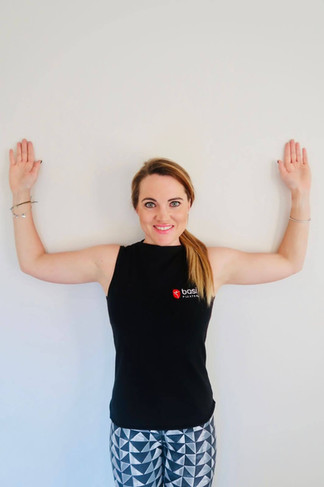Setting your shoulders free: How Pilates can help tight shoulders.
- Chi Ingledew
- Jul 4, 2022
- 3 min read

Shoulders get tight, uncomfortable, and achy from many of our day-to-day activities but even more so through all the sitting during Covid. To name a few causes of shoulder discomfort we can look at poor posture and stress management, lack of awareness of movement patterns and sports. This blog will not focus on shoulder impingements, syndromes, tendinopathies, tears, tendonitis, injuries or the like but rather focus on postural deviations, misalignments and small instabilities.
Pilates retrains movement patterns, releases tensions and ensures a solid core to help us move around our leavers with more ease. It teaches us awareness of our bodies and minds, kinesthetic awareness and proprioception. This helps us self-regulate and find a better mind-body balance. The shoulder is a muscle-dependent joint which offers a wide range of movement. However, mobility is often hindered by a lack of strength and stability. Due to the inherent instability present in the shoulder, it is imperative to learn correct mechanics and balanced muscular support. It is this stabilisation that makes the rehabilitation process functional.
One of the main reasons society suffers from shoulder pain is because of poor posture. The common term for this is text neck or Forward Head Posture (FHP). This is generally caused by too much screen time, sitting long hours and a lack of awareness. FHP is when the chin sticks out and the head is too far in front of the shoulders. Ideal posture can be detected from the side of the body starting at the lobe of the ear and runs through the body of the cervical vertebra, down the shoulder joint, midway through the trunk, down to the greater trochanter of the femur, slighting in front of the midline of the knee and finishing down in front of the lateral malleolus. Of course, good posture also consists of symmetry in the front and the back line of the body. The head is super heavy and it places strain on our neck and shoulders. Many of the neck muscles are located between the shoulder blades so it is no wonder we suffer from sore shoulders.
The following exercises help you to stretch and release the head, neck and shoulders, particularly if you suffer from FHP:
1. Glide the head forward and back to produce a temporary double chin. This will strengthen the muscles in the front of the neck while stretching the muscles into the shoulder region.
2. Cervical Nod: tilting or turning the head from side to side or lifting the chin up and down. You can also hold each of these positions and then twist the hand/arm on the side that the head is close to.
3. Shoulder shrugs and circles.

4. Theraband or for more of a challenge you can use a pole to do overhead shoulder stretches. Take the apparatus all the way back and behind you for maximum stretch.

5. Lying on your side with knees bent and arms in line with your shoulders. Take the top arm and circle it around in a circle. Let the head stay heavy and relaxed (preferably on a pillow for support) and let your head move with your moving arm.

6. Back up against a wall and arms bent 90 degrees. Slide your arms up along the wall and bring them back down.
These simple movements can facilitate good upper girdle range in motion and teach us awareness of where our upper body is in space. If we are needing to make movement changes this is a quick and easy place to see it and work from here.
Stretching will not be enough if you are tight and sore. Often misalignments and compensations have caused imbalances. Strengthening is just as important. Often tight muscles can be weak muscles. Finding neutral in the upper girdle requires stability and mobility just as we do when we are finding neutral in the pelvis.
The following exercises will help strengthen the head, neck and shoulders, particularly if you suffer from FHP:
Strength can also come from slowly including resistance and moving from closed chain exercises (distal extremities are fixed) to open chain exercises (the distal extremity is free-moving).
Chest lift: this works deep neck muscles in flexion.

2. Basic back extension into swimming: this strengthens the muscles that extend the cervical spine.
3. Arm weights to perform overhead presses, or even rows to strengthen the shoulder muscles.

When performing these exercises it is important to work the full range of motion and dynamic stabilisation (moving stability) while performing correct muscle recruitment patterns. It is best to do these exercises in front of a mirror so you can have instant feedback or work with your Pilate instructor.
Movement is important! Restoring functional movement and being pain-free is always the main goal as it will improve function and lead to recovery.




















Comments